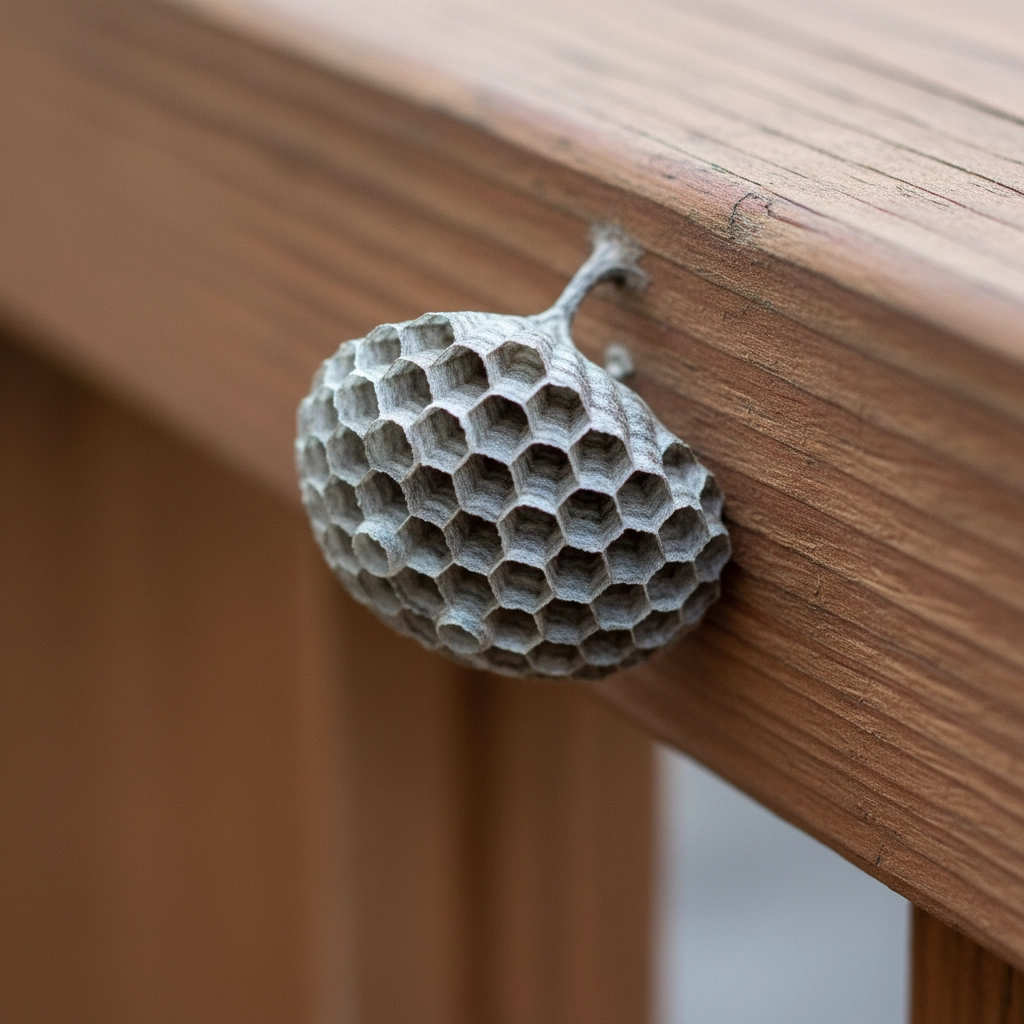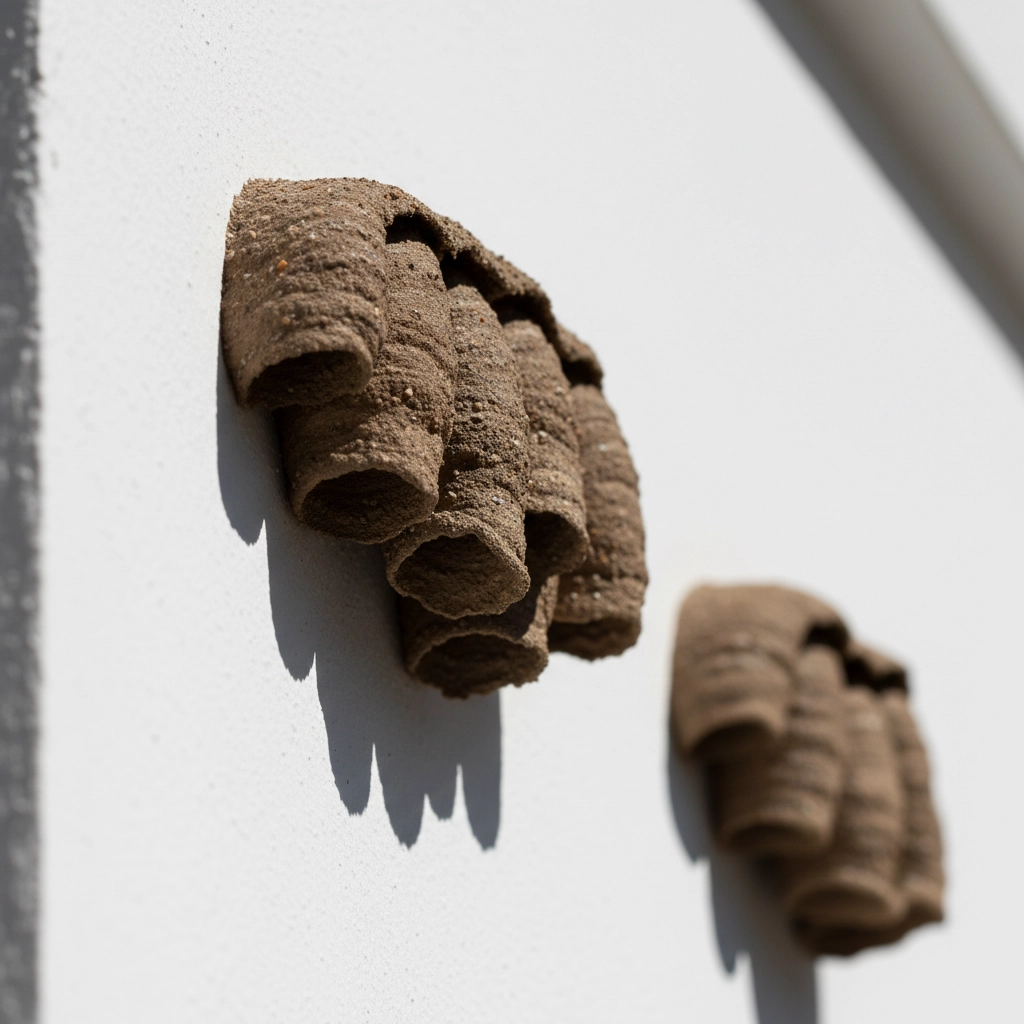Wasps in Haliburton County: Spotting, Preventing, and Handling Stinging Invaders
- Targeted Wildlife and Pest Solutions

- Sep 26
- 6 min read
Summer in Haliburton County brings cottage weekends, backyard barbecues, and unfortunately, wasps. These buzzing visitors can turn your peaceful outdoor time into a nerve-wracking experience. But here's the thing: not all wasps are created equal, and knowing which ones you're dealing with makes all the difference in how you handle them.
Whether you're a year-round resident, cottage owner, or business operator in the area, understanding your local wasp population is crucial for keeping your property safe and enjoyable.
Spotting the Key Players: Common Haliburton County Wasps
Paper Wasps: The Umbrella Builders
Paper wasps are probably the ones you'll encounter most often around your Haliburton County property. These slim-bodied insects measure about 16-20 mm long, with notably long legs that dangle during flight. You'll recognize them by their reddish-brown, black, or yellow coloration.
What really gives them away? Their nests. Paper wasps build distinctive open, umbrella-shaped nests that look like grey papery combs. Check under your deck railings, patio furniture, eaves, and around light fixtures: these are prime real estate for paper wasps.
The European Paper Wasp is a smaller cousin at 11-13 mm long. They might look similar to yellowjackets at first glance, but their longer legs and narrow waist set them apart.

Mud Dauber Wasps: The Solo Artists
Mud daubers are the loners of the wasp world, and honestly, they're pretty fascinating. These 20-25 mm long insects sport dark bluish-black bodies with bright yellow legs and an extremely narrow "waist" that makes them easy to identify.
Unlike their social cousins, mud daubers work alone and create unique mud tube nests on walls, ceilings, sheds, and under decks. If you see what looks like a series of mud tubes stuck to your building, you've found a mud dauber's handiwork.
Cicada Killer Wasps: The Gentle Giants
Don't let their size fool you: cicada killers are the largest wasps you'll see in Haliburton County at 25-38 mm long, but they're actually non-aggressive. These black and yellow wasps with reddish wings prefer to dig tunnels in loose soil near sidewalks, patios, and sandy areas.
The good news? Despite their intimidating appearance, cicada killers rarely bother humans and focus their energy on hunting cicadas.
Yellow Jackets: The Aggressive Social Wasps
How to spot:
Size 10–16 mm; bold black-and-yellow bands; stockier than paper wasps; legs tucked during flight.
Rapid in-and-out traffic to a single small opening.
Nests in underground rodent holes, retaining walls, railroad ties, and wall/soffit voids.
How they compare:
More likely than paper wasps to forage at your barbecue and garbage.
More defensive near nests than mud daubers or cicada killers, especially late summer.
European Hornets: The Night-Active Heavyweights
How to spot:
Large (25–35 mm), brown-and-yellow with a reddish head and thorax.
Active at dusk and at night; often drawn to porch and window lights.
Nests concealed in cavities: hollow trees, wall voids, attics, and barns. You may see steady traffic to a knot hole or soffit gap.
How they compare:
Larger and more nocturnal than yellow jackets and paper wasps.
The only true hornet established in Ontario; not the “murder hornet” you may have seen in the news.
The Real Risks: What You Need to Know
Sting Dangers
Most stings cause temporary pain, redness, and swelling. Seek emergency care immediately if you have trouble breathing, swelling of the face or throat, dizziness, or a history of anaphylaxis.
Paper wasps: defend exposed nests when disturbed; can sting multiple times.
Yellow jackets: highly defensive around nests and assertive scavengers at food and garbage; capable of multiple stings and short pursuit.
European hornets: defend nest perimeters, especially at dusk and night; can sting repeatedly.
Mud daubers and cicada killers: rarely sting unless handled.
Property Concerns
Paper wasps: return to the same sheltered spots, building multiple small nests around eaves, lights, and railings.
Yellow jackets: nest in wall and soffit voids or underground rodent holes; void nests can lead to wasps entering living spaces; ground nests near paths create surprise encounters.
European hornets: nest in tree cavities and structures; may strip bark from shrubs and trees while foraging sap; night activity around windows can alarm people and pets.
Mud daubers: leave durable mud tubes that create visual buildup on walls and ceilings.
Cicada killers: dig burrows and leave small soil mounds that alter turf and beds.

Prevention: Your First Line of Defense
Seal Entry Points
European Paper Wasps love small cavities, so inspect your property for gaps in siding, vents, pipe openings, and window frames. A little caulk or weatherstripping now can save you major headaches later.
Control Food Sources
Wasps have a sweet tooth. Reduce attractants, especially for yellow jackets:
Keep bins closed with tight-fitting lids; double-bag and tie trash.
Rinse bottles and cans before placing in recycling.
Cover food and drinks outdoors; use cups with lids and straws.
Clean spills immediately; remove fallen fruit and scrap fish/meat from docks and prep areas.
Secure compost with pest-resistant lids or fine mesh.
Environmental Modifications
For cicada killers specifically, increase irrigation in problem areas: they prefer dry soil for burrowing. Adding shade coverage and ground cover like turf, mulch, or weed cloth makes outdoor spaces less attractive to various wasp species.
Reduce Night Attractants (European Hornets)
Turn off unneeded exterior lights after dusk or switch to warm/yellow “bug” bulbs.
Close windows and use tight-fitting screens at night.
Draw blinds or curtains near bright indoor lights.
Seal gaps in soffits, fascia, and siding; add insect screening to attic, gable, and vent openings.
Natural Deterrents
Certain scents naturally repel wasps and hornets. Peppermint, eucalyptus, and citronella essential oils sprayed around potential entry points or high-activity areas can help keep wasps at bay without harsh chemicals.
When Wasps Move In: Response Strategies
Paper Wasps
Paper wasps aren't naturally aggressive, but they will defend their nests. If you discover a nest in a low-traffic area, you might choose to leave it alone: they actually help control other pest insects. However, nests near doorways, play areas, or frequently used spaces should be addressed.
Professional removal is your safest bet, especially since paper wasps can sting multiple times and may return to treated areas without proper follow-up applications.
Mud Dauber Wasps
These solitary wasps present minimal risk since they rarely sting and maintain non-aggressive behavior. You can often coexist peacefully with mud daubers. However, old nests should be removed to prevent new wasps from taking up residence.
Cicada Killer Wasps
Most cicada killer situations don't require active intervention. Natural management through environmental modification often proves sufficient. However, if multiple burrows are creating landscape concerns or affecting your enjoyment of outdoor spaces, professional assessment can help determine the best approach.
Yellow Jackets
Keep at least 10 metres away from nest openings; do not mow or trim near ground nests.
Do not block or seal the entrance; trapped colonies can move deeper into walls and may emerge indoors.
Never pour gasoline, ammonia, or water into nests; it is dangerous and ineffective.
Mark the area to warn family and guests. Contact a professional for safe treatment and follow-up sealing once activity ceases.
European Hornets
Limit outdoor lighting near the nest at night; keep pets and people inside until assessed.
Do not attempt removal from wall voids, attics, or tree cavities; colonies are large and defensive.
If a hornet enters your home, darken the room and open a window to let it exit; avoid swatting.
Arrange professional service. Night or pre-dawn treatments may be recommended for minimal disruption and long-term results.

DIY Solutions That Work
Commercial Traps
Wasp traps can effectively reduce populations when placed strategically. Position them away from outdoor living areas but near known nesting sites. Empty and refresh traps regularly for best results.
Safe Nest Removal
If you decide to tackle a small nest yourself, never attempt removal during daylight hours when wasps are most active. Early morning or evening approaches work best, and always wear protective clothing covering all exposed skin. Do not attempt yellow jacket ground or wall-void nests, or any hornet nest (including European hornets). These require specialized equipment and training.
Ongoing Monitoring
Regular property inspections help catch wasp activity early. Check common nesting areas monthly during spring and summer, looking for new construction or increased wasp traffic.
Professional Intervention: Know When to Call
Some situations clearly require professional pest control expertise. Contact professionals when you discover large nests, multiple nesting sites, or when safety concerns arise due to nest locations near high-traffic areas.
Professional intervention becomes essential for yellow jackets and European hornets. Yellow jacket ground and void nests and hornet colonies can escalate quickly and pose significant sting risks. European Paper Wasps also build multiple nests and sting readily when disturbed. Any situation involving potential allergic reactions or vulnerable individuals (children, elderly, those with compromised immune systems) warrants professional assessment.
Experienced pest control specialists can identify species accurately, develop targeted management plans, and implement long-term prevention strategies tailored to your specific property and local wasp populations.
Living Peacefully with Haliburton County's Wasps
Understanding your local wasp population helps you make informed decisions about management and coexistence. While wasps can be concerning, many species provide beneficial pest control services and rarely interact negatively with humans when left undisturbed.
The key lies in prevention, early detection, and appropriate response based on species identification and risk assessment. With proper knowledge and occasional professional support, you can maintain a safe, enjoyable outdoor environment while respecting the ecological role these insects play in Haliburton County's natural balance.
Remember, every property and situation is unique. When in doubt, professional consultation provides peace of mind and ensures the safety of your family, guests, and property.
Comments